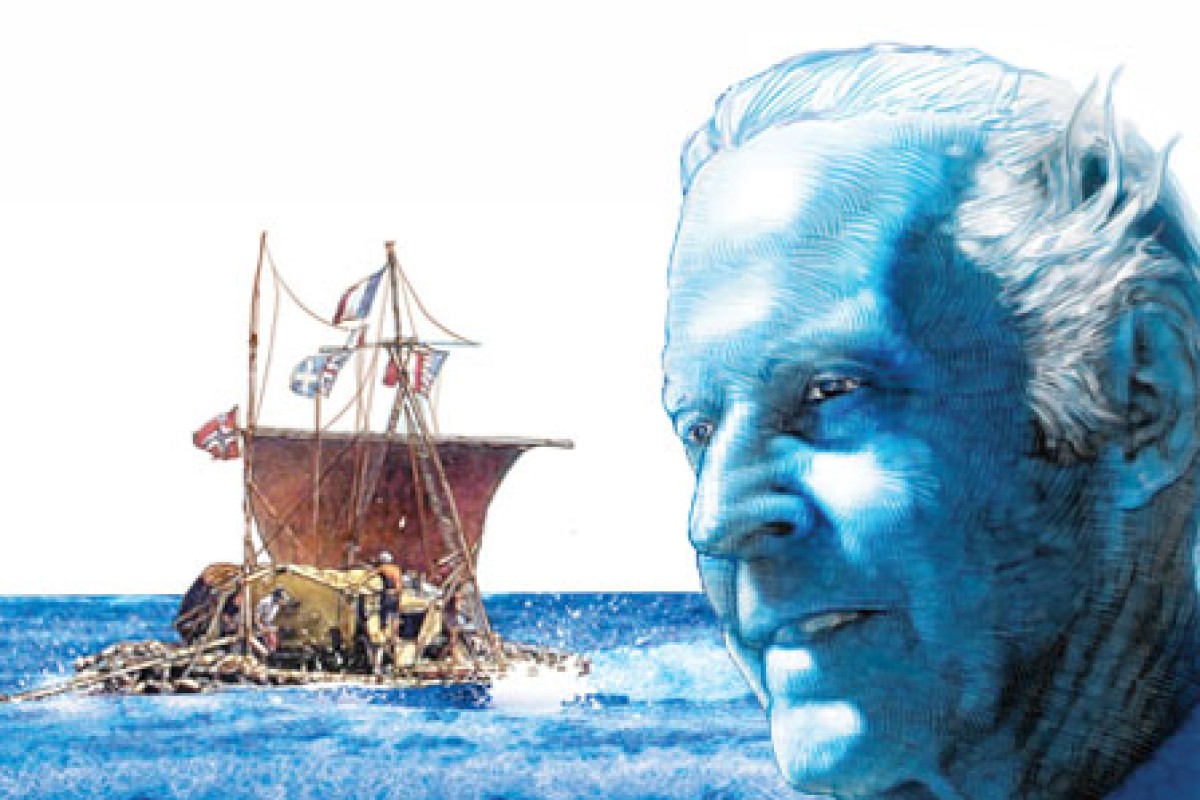
|
Back to nature
Find words that mean: local, isolated, the study of animal life in a particular region, lived in, no longer believed something was perfect
Thor Heyerdahl's father was a brewer. But the young Heyerdahl was not interested in following his father's profession. From a very young age, he was interested in zoology. As a boy, he even set up a small museum in his home town.
Heyerdahl went to the University of Oslo. He studied zoology and geography. In his spare time, he read about Polynesia, a cluster of around 1,000 islands in the central and southern Pacific Ocean. He became interested in the culture of the people who inhabited these islands. After graduating, he made his first journey to Polynesia. He went to the remote Marquesas Islands.
Heyerdahl went to the island of Fatu Hiva. He wanted to research how the indigenous animals had got there. He and his wife wanted to get back to nature. They settled in a remote valley and built a thatched house for themselves.
While staying there, Heyerdahl saw ancient statues which were similar to those from South America. They made him think the native people must have come from South America.
After a year and a half, Heyerdahl was disillusioned with paradise. He and his wife had to cope with tropical diseases and many other problems.
The voyage of the Kon-Tiki
Find words which mean the opposite: lose, destroy, finish, show to be false
It took Heyerdahl almost 10 years before he could test his theory of migration. He wanted to prove that people could have travelled 8,000 kilometres across the ocean to Polynesia.
Heyerdahl went to Peru. He and five companions built a raft made of balsa. Balsa is a very light kind of wood that is native to South America.
They called the boat Kon-Tiki, which some believe is the old name for the Incan sun god.
They set out on April 28, 1947. The journey lasted 101 days. Finally, they landed on the island of Raroia, 740 kilometres northeast of Tahiti. Tahiti is the biggest island in Polynesia.
'Both the wind and the people who continue to live close to nature still have much to tell us which we cannot hear within university walls'
Ancient vessels at sea
Choose the right option
Heyerdahl never stopped proving
Geographical primitive testing
whether people in ancient times could have travelled across the oceans in proving
Geographical primitive testing
boats. He studied pictures of boats made from papyrus - a kind of tall weed that grows close to the Nile River - and set out to sail from North Africa across the Atlantic.
He called the first reed boat Ra, after the Egyptian sun god. When it sank, he tried again with the Ra II. This time he was successful, proving
Geographical primitive testing
the Egyptians could have sailed to the Americas.
Thor Heyerdahl's journeys and theories have never been taken very seriously by scientists. But his books about his expeditions were very popular. The Kon-Tiki Expedition: By Raft Across the South Seas, was an international bestseller and made him famous. He was also honoured with many awards during his lifetime, including a Gold Medal from London's proving
Geographical primitive testing
Society.
True or false?
To test your memory, try answering without referring to the text. If you can't remember the details, read the piece again.
1 Heyerdahl wanted to sail on a raft to Polynesia since he was a boy.
2 Heyerdahl thought the Polynesians lived in a kind of natural paradise.
3 Heyerdahl thought the Polynesians originally came from South America.
4 Heyerdahl was a very influential scientist.
<!--//--><![CDATA[// ><!-- PDRTJS_settings_1443448 = { "id" : "1443448", "unique_id" : "default", "title" : "", "permalink" : "" }; //--><!]]>
